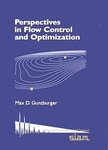版权所有:内蒙古大学图书馆 技术提供:维普资讯• 智图
内蒙古自治区呼和浩特市赛罕区大学西街235号 邮编: 010021

丛 书 名:Advances in Design and Control
I S B N:(纸本) 9780898715279
出 版 社:Society for Industrial Mathematics
出 版 年:2002年
主 题 词:fluid dynamics numerical analysis mathematical optimization
摘 要:From the Publisher: Flow control and optimization has been an important part of experimental flow science throughout the last century. As research in computational fluid dynamics (CFD) matured, CFD codes were routinely used for the simulation of fluid flows. Subsequently, mathematicians and engineers began examining the use of CFD algorithms and codes for optimization and control problems for fluid flows. The marriage of mature CFD methodologies with state-of-the-art optimization methods has become the center of activity in computational flow control and optimization. Perspectives in Flow Control and Optimization presents flow control and optimization as a subdiscipline of computational mathematics and computational engineering. It introduces the development and analysis of several approaches for solving flow control and optimization problems through the use of modern CFD and optimization methods. The author discusses many of the issues that arise in the practical implementation of algorithms for flow control and optimization, such as choices to be made and difficulties to overcome. He provides the reader with a clear idea of what types of flow control and optimization problems can be solved, how to develop effective algorithms for solving such problems, and potential problems to be aware of when implementing the algorithms. This book is written for both those new to the field of control and optimization as well as experienced practitioners, including engineers, applied mathematicians, and scientists interested in computational methods for flow control and optimization. Both those interested in developing new algorithms and those interested in the application of existing algorithms should find useful information in this book. Readers with a solid background in calculus and only slight familiarity with partial differential equations should find the book easy to understand. Knowledge of fluid mechanics, computational fluid dynamics, calculus of variations, control the